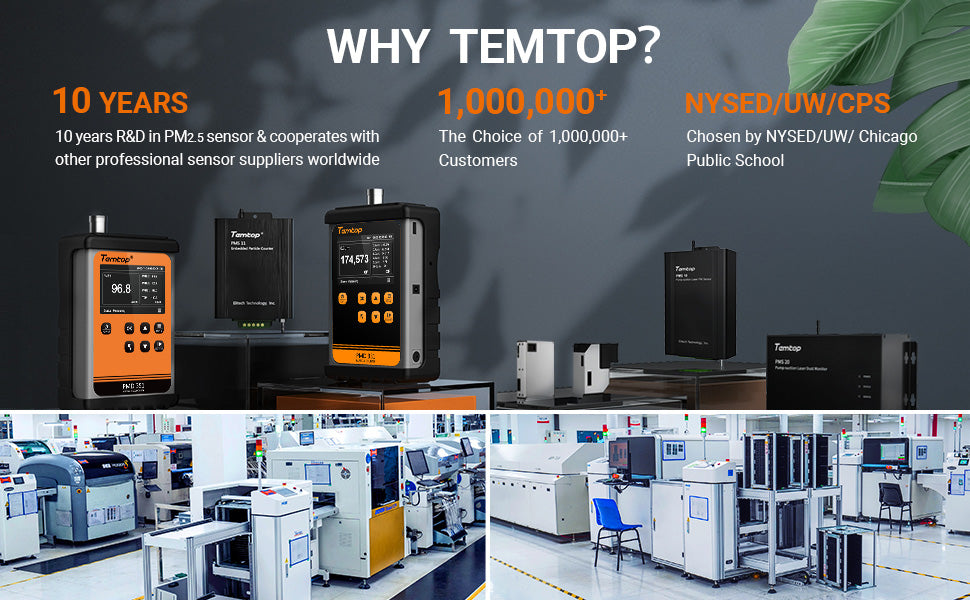Temtop - Advancing Particle Counter for Cleanrooms
With the aim of environmental health, more and more people are gradually becoming aware of the impact of air on health, efficiency, and creativity. Starting with human and indoor air quality (IAQ), global enterprises, universities, regulatory bodies, hospitals, and factories all focus on IAQ as an important environmental indicator.
Indoor air quality can be constantly changing due to a variety of factors, such as ventilation systems, the construction industry, and user behavior. However, because some changes are too subtle, people may not be able to perceive changes in indoor air quality. In the past, people spent decades raising awareness of the purification of water resources. Now people have entered an era of attaching more importance to air purification, and have become more active in the long-term measurement and monitoring of air quality to ensure a healthier, safer, and more efficient working and living environment.
Clean rooms and controlled environments depend on the limited existence of particles to operate normally. To confirm compliance in a controlled space and continuously monitor compliance, Temtop provides a range of portable handheld, and small desktop particle counters. Our equipment is reliable, cost-effective, and can measure various particle sizes from 0.3 to 10.0 microns. Temtop particle counters are used to determine the environment of certain manufacturing processes.
The professional monitoring instrument developed by Temtop, a US company, is easy to operate and can quickly, accurately, and effectively detect suspended particles in a purified environment, making it the preferred product for quickly checking the cleanliness of clean rooms in dental clinics, pharmaceutical factories, and electronics factories.
In the past decade, Temtop has expanded its focus from temperature and humidity to professional monitoring equipment for key indicators such as particles (PM2.5), VOCs, CO2, and formaldehyde. It can help IAQ experts quickly and accurately assess the basic air quality level, and long-term monitoring can help identify potential problems, improve operations, and maintain healthy air quality.




















































































































